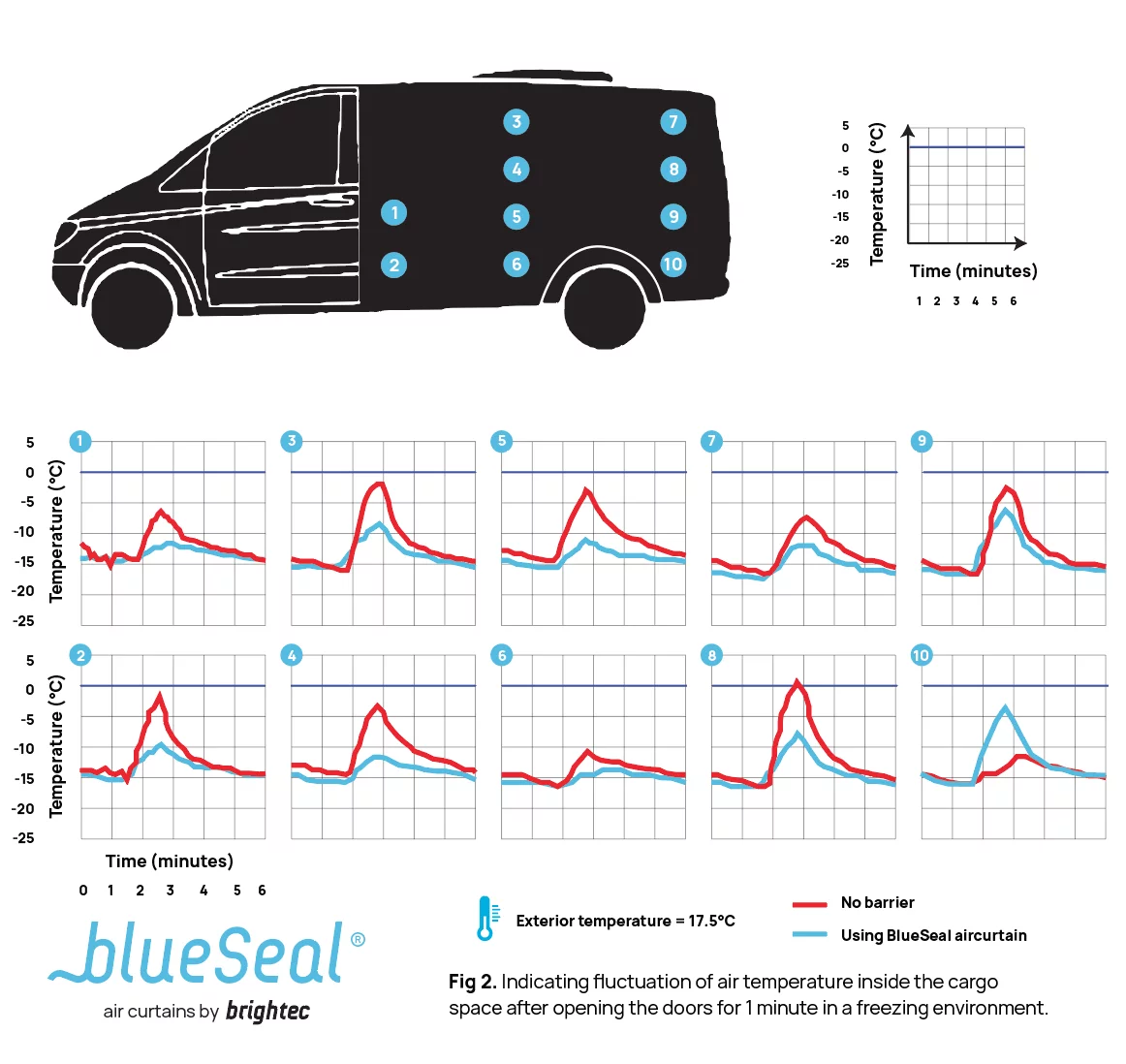
Luftvorhänge für energieeffiziente Kühltransporter: Profitieren kleinere Fahrzeuge von BlueSeal?
Hinweis: Dieser Artikel wurde maschinell übersetzt und kann geringfügige Abweichungen enthalten. Für die ursprüngliche (englische) Version dieses Artikels ändern Sie bitte die Spracheinstellung auf der Website.
In einem früheren Test zeigten wir die Leistung von BlueSeal-Luftvorhängen in einem Kühlauflieger, mit 30-40 % Kraftstoffeinsparung für die Kühlung. Dies führte zur Entwicklung von BlueSeal Original, weit verbreitet in der Lebensmittel- und Pharmaindustrie.
Später folgte BlueSeal Compact, im schlanken Design für kleine Laderäume. Wir wollten prüfen, ob Luftschleier für energieeffiziente Kühltransporter in kleineren Fahrzeugen denselben Nutzen bringen.
Warum kleinere Fahrzeuge Luftvorhänge für energieeffiziente Kühltransporter brauchen
Kühltransporter verlieren viel Kälte, wenn die Türen geöffnet werden. Ohne Klimabarriere muss die Kühlanlage stärker arbeiten, was mehr Energie und Kraftstoff verbraucht.
Test im Kühltransporter
Getestet wurde in einem Mercedes Vito (Laderaum ca. 4,8 m³) bei Außentemperaturen von 16-17 °C. Gekühlt wurde mit einer Dieselanlage (auch elektrisch möglich).
Zehn Sensoren maßen alle 5 Sekunden über 6 Stunden die Temperatur.
- Tag 1 – Einmalige 1-minütige Türöffnung, mit und ohne BlueSeal
- Tag 2 & 3 – Wiederholte Türöffnungen, ohne Barriere, mit PVC-Streifen und mit BlueSeal
(Abbildung 1 zeigt den Laderaum; Abbildung 2 die Sensorpositionen.)

Fig 1. Cargo space of the Mercedes Vito. Locations in height are given for the 8 sensors near the rear doors and in the centre of the cargo space
Test 1 – Einzelöffnung: Temperaturänderung
Ohne Barriere stieg die Temperatur an der Decke um 17 °C in einer Minute. Mit Luftvorhängen für energieeffiziente Kühltransporter nur um 7,5 °C.

Test 2 – Wiederholte Türöffnungen
- Ohne Barriere – +15-18 °C nach vier Öffnungen (Abbildung 3a)
- Mit BlueSeal – +7-8 °C
BlueSeal senkte den Energieverbrauch und hielt die Temperatur stabil.

Test 3 – BlueSeal vs PVC-Streifen
- PVC-Streifen – +20-22 °C an Decke und Mitte
- BlueSeal – +17 °C
BlueSeal sorgte für gleichmäßigere Temperaturen durch kontrollierte Luftzirkulation.

Fazit
Luftvorhänge für energieeffiziente Kühltransporter bewährten sich auch in kleinen Laderäumen: bessere Temperaturhaltung, Hygiene und Energieeinsparung als PVC-Streifen.
Für weitere Informationen zu BlueSeal-Luftschleiern kontaktieren Sie bitte unsere Brightec-Berater unter [email protected]